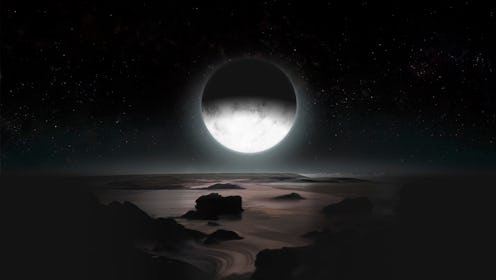News
8 Details We All Got Wrong About Pluto

A huge part of science is gathering evidence, creating theories, and continuously collecting more evidence that proves those original assertions false. Plenty of great minds — think Aristotle, Darwin, Tesla — have had to learn this lesson the hard way, scooting over to make room for new information in the name of progress. In the wake of the spacecraft New Horizons' sojourn to Pluto, it turns out that astronomers were wrong about a lot when it come to the dwarf planet.
After a nine-year journey, New Horizons finally reached its moment of closest approach to Pluto. On Monday, the craft took the first close-range photo of Pluto, and NASA released the image on Tuesday through Instagram, gaining an explosion of excitement from the scientific community that demoted Pluto from planet to dwarf planet in 2006. New Horizons left Earth via Cape Canaveral in 2006 and traveled 2.97 billion miles.
However, the images NASA received from the spacecraft don't exactly match the solar system models we built in elementary school. Pluto doesn't actually look like a tiny Styrofoam blue ball. The photos reveal a lot of new information about the icy world, including some facts scientists got wrong about Pluto. Here are eight things NASA learned about Pluto from the New Horizons trip:
It's Larger Than We Thought
NASA has never really been able to nail down the exact size of Pluto. Scientists have debated since they discovered Pluto in 1930. New Horizons revealed Pluto to be 1,473 miles in diameter, making it larger than the previous estimate of 751 miles, according to NASA.
It Has Ice Caps
The craft confirmed that there is a polar ice cap on the surface of Pluto. Before this mission, astronomers could only speculate what was on the surface of the mass. In April, as New Horizons approached Pluto, photos revealed some blotchiness in the color, and now that the images have become clear, NASA has been able to confirm the existence of polar ice caps on Pluto.
The Density Is Lower
Although it's now confirmed that Pluto is the largest object in the freezing Kuiper Belt, New Horizons has revealed that the dwarf planet is less dense than previously thought. The fraction of ice inside is higher than the scientific community believed, NASA says.
The Atmosphere Is Thinner
NASA found that the troposphere, which is the lowest layer of Pluto's atmosphere, is shallower than they had previously thought. When Pluto is closest to the sun, it forms an atmosphere. When it moves away, the atmosphere freezes and falls to the ground.
There Are A Ton Of Craters
Some areas of Pluto are dotted with many impact craters that are estimated to be several billion years old. Other parts have no craters, indicating that they are younger and that Pluto has a complicated geology, according to NASA.
Charon Has Ice Mountains
Pluto's largest moon, Charon, has massive ice mountains, according to The Daily Telegraph. The mountains are about 11,000 feet high, about the size of the Rocky Mountains. Charon also has canyons that look deeper than the ones seen on Earth.
It's Not In The Same League As Triton
Scientists previously liked to compare Pluto and Triton, Neptune's largest moon, calling them sisters or cousins because they are both small, icy masses with thin, Nitrogen-based atmospheres. According to Popular Science, Planetary Scientist Bill McKinnon called Pluto “Triton on steroids.”
It Has A Heart
NASA found a feature on the surface of Pluto that looks like the shape of a heart. Estimated to be about 1,000 miles wide, the heart rests above Pluto's equator. It looks like Pluto is finally getting the love it lost after its demotion to dwarf planet.
Images: Getty Images (8), NASA